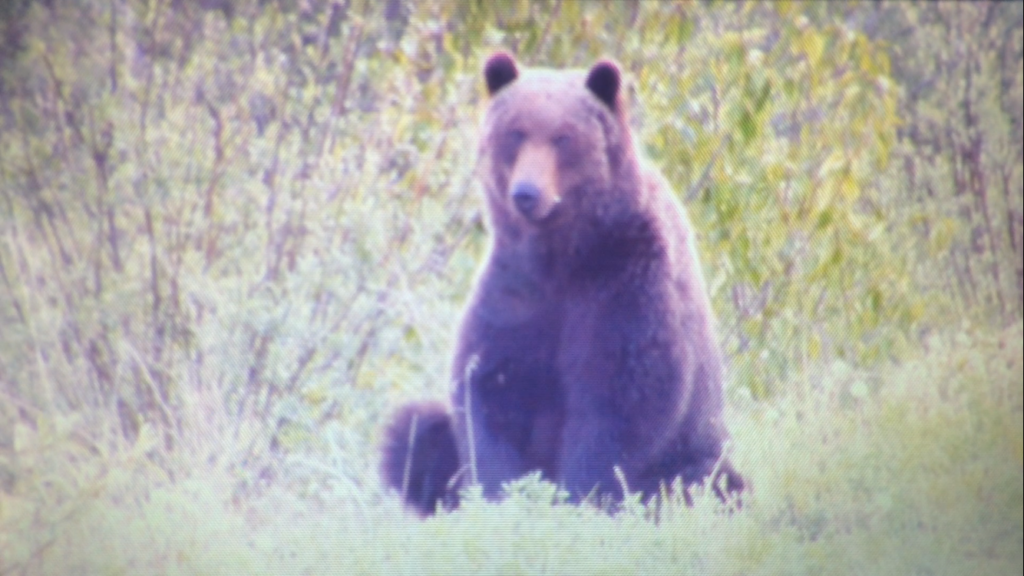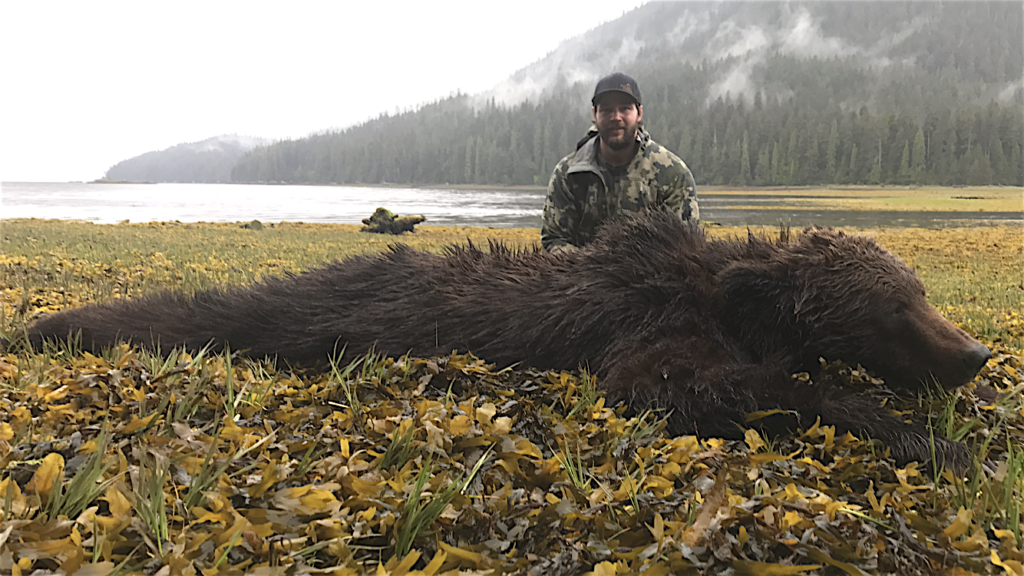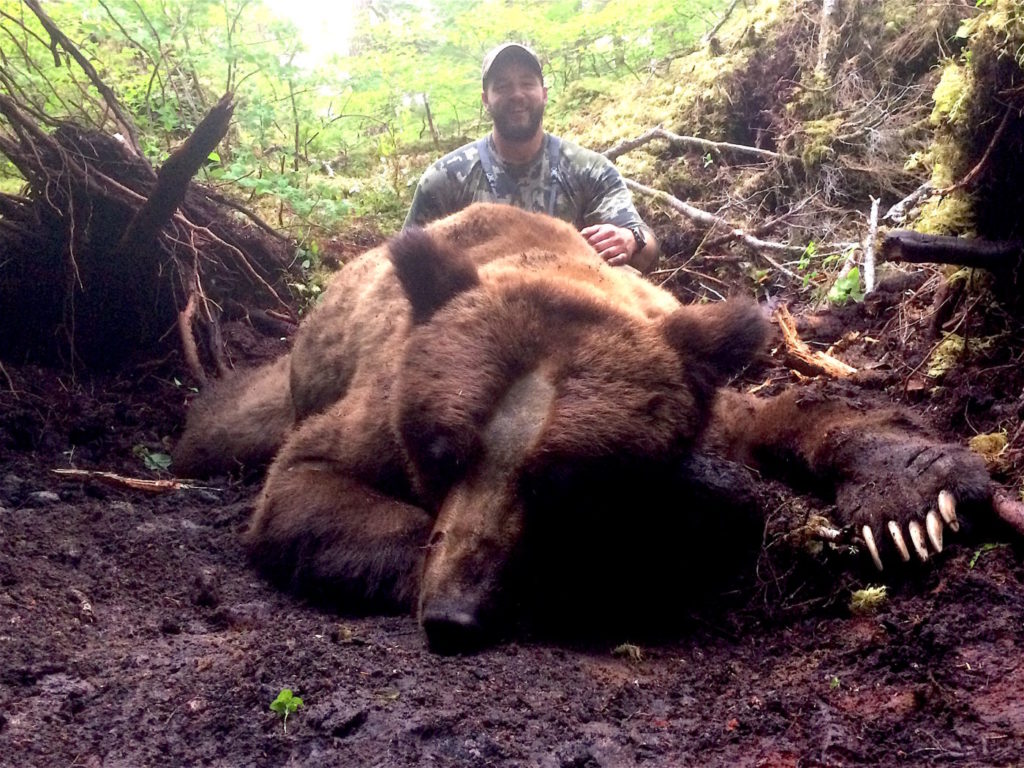There is no question that bears are one of the harder species to judge in the field. With most horned or antlered animals, you know when you’re a looking at a mature representative of the species. Bears, especially grizzly bears if you’re not used to seeing them, are a bit more challenging to gender identify and judge for maturity, but with some research and time spent studying the key characteristics to look for, it’s very doable. In this article, I’ll cover the “tells” I use to determine whether I’m looking at a boar that I’m willing to try and put in the salt.
Your first step, should be to try to determine the sex. The prospective grizzly (or brown bear) hunter should be focused on taking a mature boar. It is well documented that after a certain point, older boars can have a negative impact on the local population, especially cub mortality, so from the standpoint of conservation and “trophy” quality boars should be your focus. It can be quite difficult to judge “he” or “she” on a grizzly, especially with the larger coastal bears, when both sexes are fat from their fill of salmon.
Sows tend to present with some obvious characteristics many hunters will be aware of such as, thin tapered snouts, a lack of shoulder mass, narrow heads, thin legs with minimal muscle definition, cubs nearby, and the way they urinate. For me the dead giveaway that identifies a sow is the ankles. A sow’s legs will always taper before the paw and show her wrist, whereas a boar will have thick forearms that appear to connect right down to their paws. Some people believe that a lighter fur colouration can be a good indicator, but in my experience, I wouldn’t rely on this due to the number of large blonde males I’ve seen in my hunting experience.
One you’ve identified a bear as a boar, the next step is to judge him for age and size. Everyone knows that a big bear’s ears will appear small and tend to be oriented more to the side of their heads, with lots of space between them. Mature boars will also have a blocky or square looking head. For some hunters, that’s all the confirmation they need but I like to look at the whole package.
There are a few other facial features I look for when assessing a boar. A big crease between the muscles on their foreheads is another good indicator as this is most common in mature males. Multiple scars, missing ears and other battle wounds are all good hints you’re looking at an old warrior.
Next up you should scope down the neck. With big, old boars the neck is typically so massive that it’s even thicker than their heads, where it connects to the shoulders you’ll often observe a “no neck” appearance. Working back along the body from the neck you should be looking for large “boulder shoulders” as I like to call them. A dead giveaway on any mature male bear (of any species) is the obvious presence of defined muscle throughout the whole body. There will always be fat bears but if the bear is big enough, their shoulders will stand out and be clearly defined.
I often hear people suggest that you should look for short legs but that’s not always the case. A big bear can have long legs so this tip can be misleading at times. There is a difference between long and lanky. As with humans, a big tall dude can appear less stocky but still be a big dude. That’s lanky and not skinny, and I’ve seen mature boars that fit this description that would absolutely be worth my time and effort. A big belly is always a good thing but there are large males that won’t have this trait, especially in more mountainous or interior habitats as these bears tend to be far more mobile than coastal bears and must burn more calories on a day to day basis in search of food. If the bear is large enough you can often even see his penis sheath at the end of his belly. A mature male will appear overall long and thick through his entire frame.
Another simple trick I was taught by some of the experienced bear hunters I’ve had the good fortune of spending some time with can be utilized when you haven’t even seen the bear yet. If you find a fresh track on good ground, you can use a measuring trick to get a sense of the bear’s size. Measure the track and add an inch and that tends to be a good estimate of the length of the bear when converted to a measurement in feet.
Some other things I look for are the attitude and the way a bear carries himself when he walks. We’ve all heard of the cowboy walk, and it’s true, a big boar will waddle like his sh*t don’t stink when he’s on the move.
These are the main techniques I use when judging grizzlies in the field. The biggest tip I can offer however is to be patient. Ground shrinkage is a very real thing especially while grizz or brown bear hunting as so many hunters can get caught up in the size of even a middle-aged sow or young boar. As with other animals, take your time and look that bear over thoroughly until you are confident that you want to pull the trigger or loose an arrow.
To close this off, let’s look at a few pictures from a variety of angles. Assessing bears from different angles is good practice for the less than perfect viewing conditions you may encounter in the field.
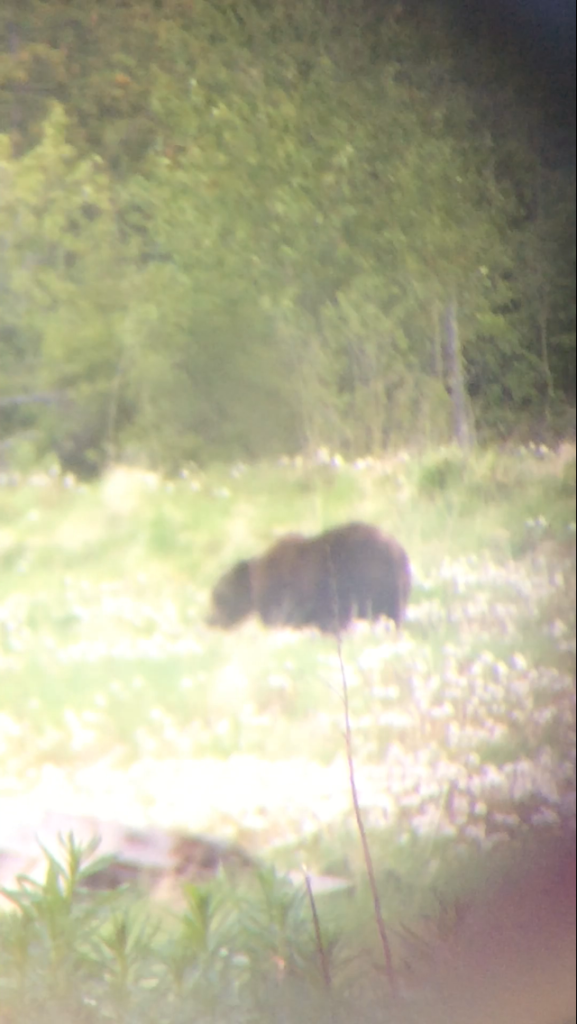
This is also a mature boar. Larger blocky head, ears on the side of his head, crease down his forehead, thick neck larger than his head, large pronounced hump.
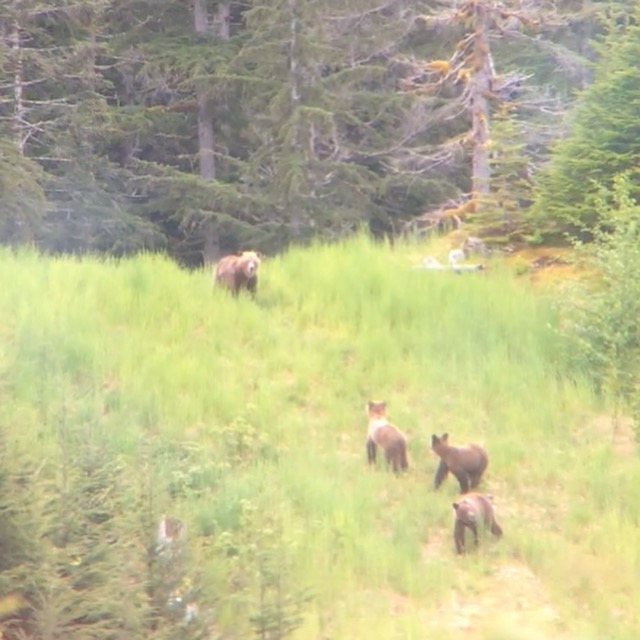
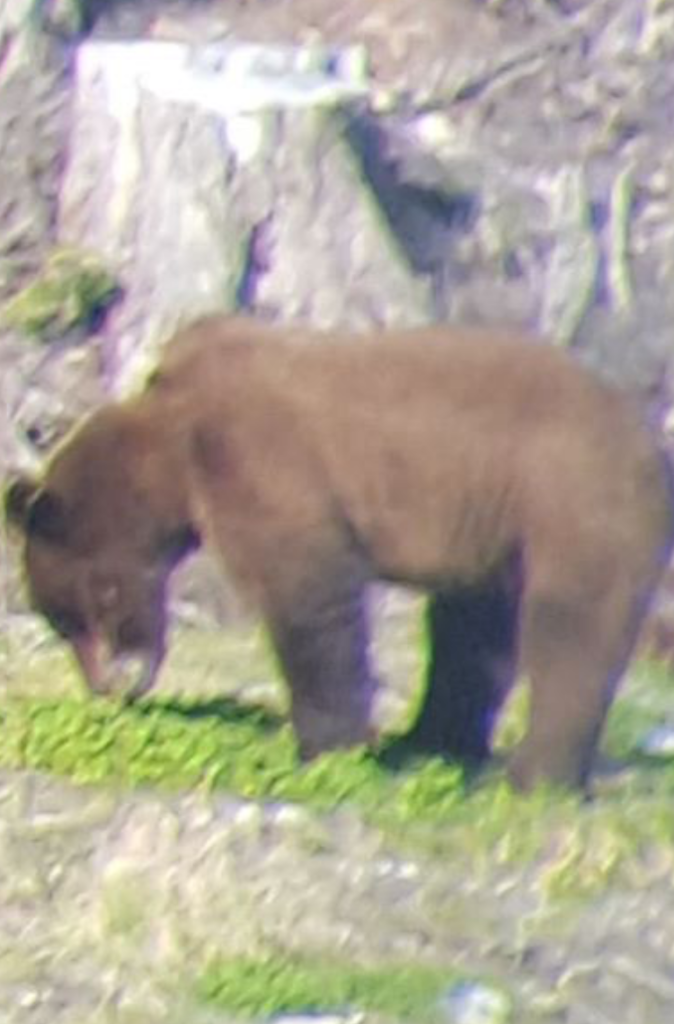
This one’s tougher but she’s a sow. Note the long face, fluffy fur, and disproportionately large heart shaped rear end as opposed to being large throughout her frame.
